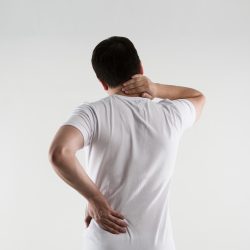 An international research team which was led by physician/scientists at the University of California San Diego School of Medicine has described a new process for delivering neural precursor cells (NSCs) to rats with spinal cord injuries. The process reduced the risk of additional injury and boosted the propagation of potentially repairing cells.
An international research team which was led by physician/scientists at the University of California San Diego School of Medicine has described a new process for delivering neural precursor cells (NSCs) to rats with spinal cord injuries. The process reduced the risk of additional injury and boosted the propagation of potentially repairing cells.
NSCs are known to hold great potential for treating a variety of injuries and neurodegenerative diseases to the spinal cord. These stem cells have the ability to differentiate into multiple types of neural cell depending on their environment. This has led to intense interest and much effort to use these cells to repair injuries to the spinal cord and effectively restore related functions.
Current techniques for delivering spinal cells involve direct needle injection into the spinal parenchyma. This is the primary cord of nerve fibers that runs throughout the vertebral column. This technique creates an inherent risk of further injury to spinal tissue or intraparechymal bleeding.
The new technique created by the team is less invasive. It deposits injected cells into the spinal subpial space which is a space between the pial membrane and the superficial layers of the spinal cord.
This injection technique allows for the delivery of a high number of cells from a single injection. Cells that possess proliferative properties such as glial progenitors, can then migrate into the spinal parenchyma and populate over time in multiple spinal segments as well as the brain stem. These injected cells acquire functional properties consistent with their surrounding host cells.
The team suggests that subpially injected cells will likely accelerate and improve treatment potency in therapies involving cell replacement for a variety of spinal neurodegenerative disorders in which a broad repopulation of glial cells is desired. This could include amyotrophic lateral sclerosis, spinal traumatic injury, and multiple sclerosis.
The team plans to test their cell delivery system in larger preclinical animal models with spinal traumatic injury and which closely mimic human size and anatomy. Their goal is to define the optimal dosing of cells and the optimal timing of cell delivery which is associated with the best treatment effect following a spinal injury.
To view the original scientific study click below





